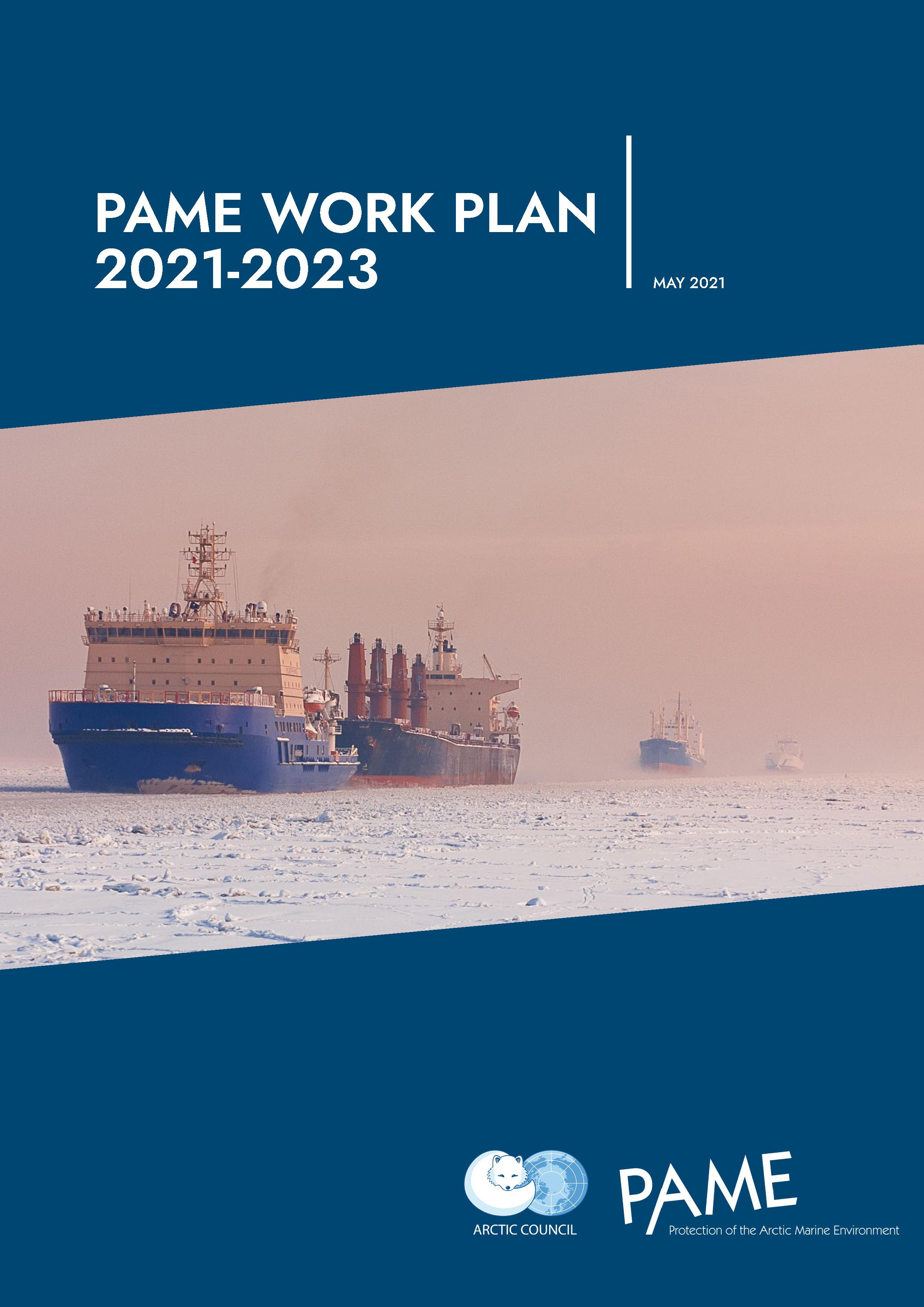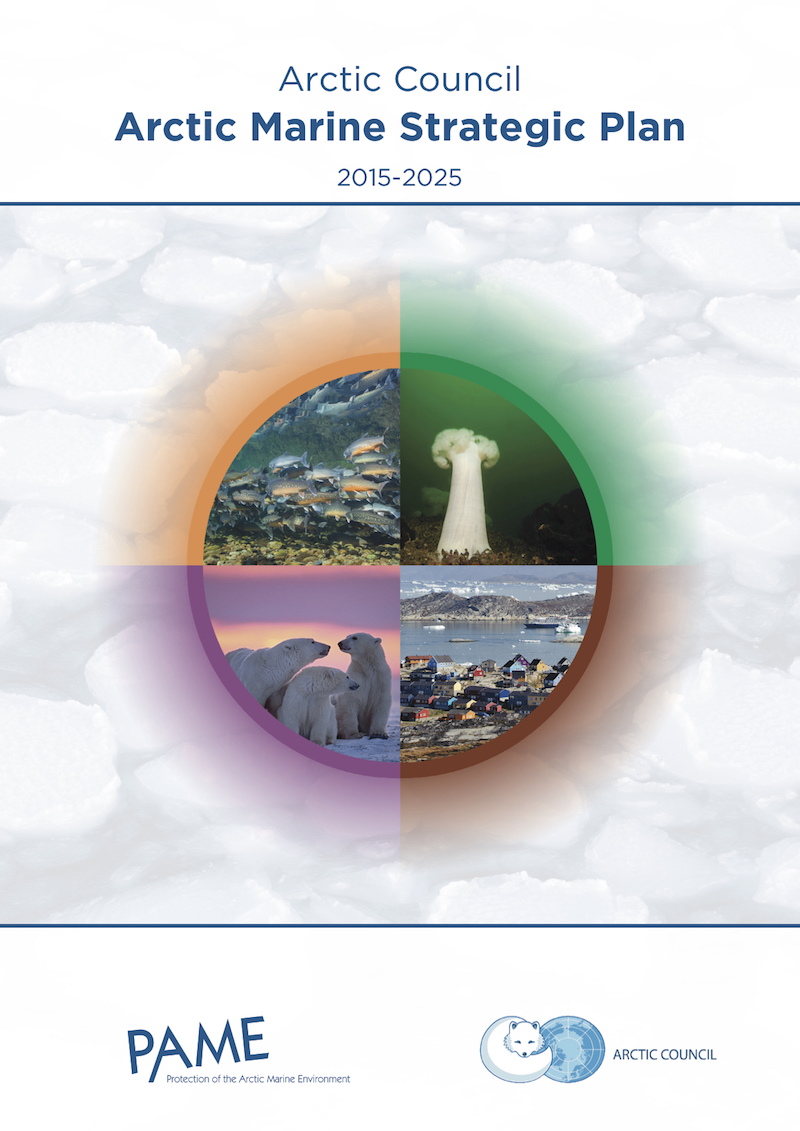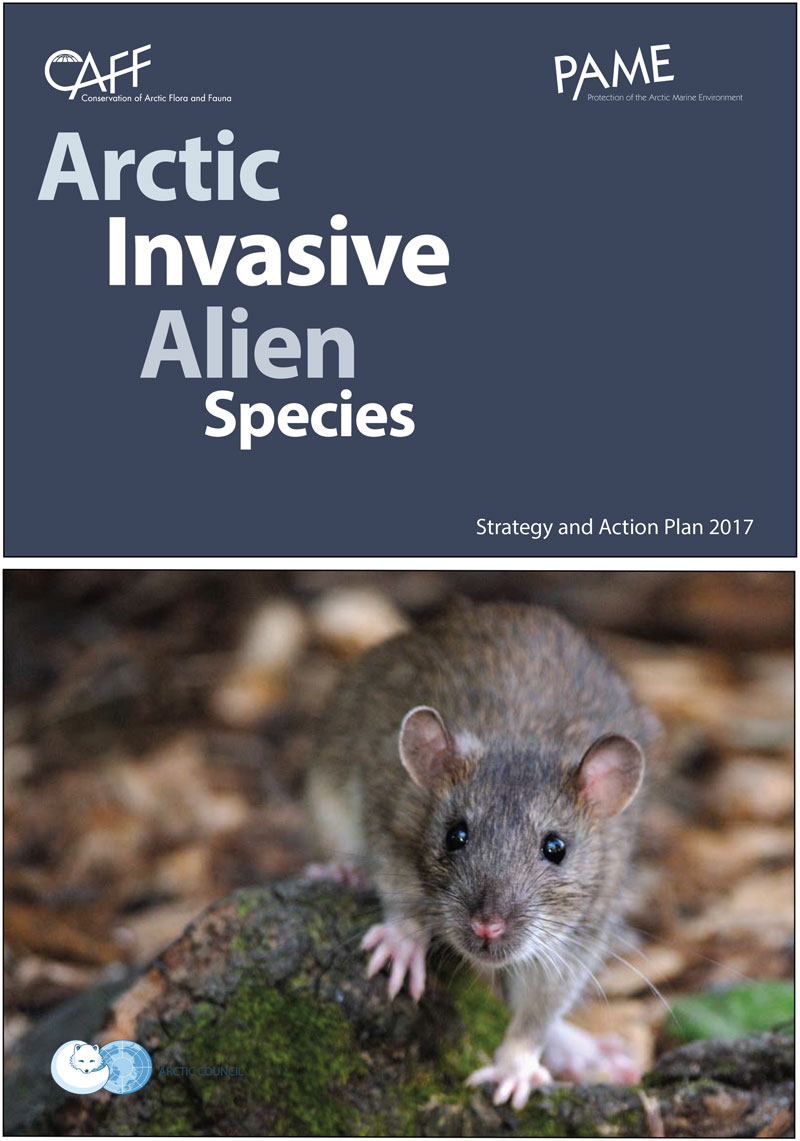 PAME is working with Conservation of Arctic Flora and Fauna (CAFF) working group on the Arctic Invasive Alien Species Strategy and Action Plan (ARIAS), a strategy to prevent the introduction of invasive species in Arctic ecosystems. The initiative is led by Norway and the US within CAFF. PAME’s focus is on the marine and coastal components of the strategy. The overall goal of the project is "to prevent the introduction of invasive species in Arctic marine, coastal, freshwater, and terrestrial ecosystems, and through establishing a baseline, improve management of on- going invasions using risk-based assessment and management approaches."
PAME is working with Conservation of Arctic Flora and Fauna (CAFF) working group on the Arctic Invasive Alien Species Strategy and Action Plan (ARIAS), a strategy to prevent the introduction of invasive species in Arctic ecosystems. The initiative is led by Norway and the US within CAFF. PAME’s focus is on the marine and coastal components of the strategy. The overall goal of the project is "to prevent the introduction of invasive species in Arctic marine, coastal, freshwater, and terrestrial ecosystems, and through establishing a baseline, improve management of on- going invasions using risk-based assessment and management approaches."Click here to access the project website.
INVASIVE ALIEN SPECIES IN THE ARCTIC
The Arctic Council has recognized that while there are currently few invasive alien species in the Arctic, more are expected with climate change and increased human activity (ABA 2013) and the introduction of invasive alien species to the Arctic would result in a significant adverse environmental impact. This effort is particularly urgent for the Arctic region. Rapid climate change is making the region more vulnerable to invasive species introductions, and at the same time a rapid increase in human activity and transit and energy development in the region is increasing the chance of introduction of new and invasive species. There is an immediate opportunity— already largely lost in many other regions of the world—to proactively build resilience to the risks posed by invasive species to the Arctic’s unique social, economic, and environmental systems.
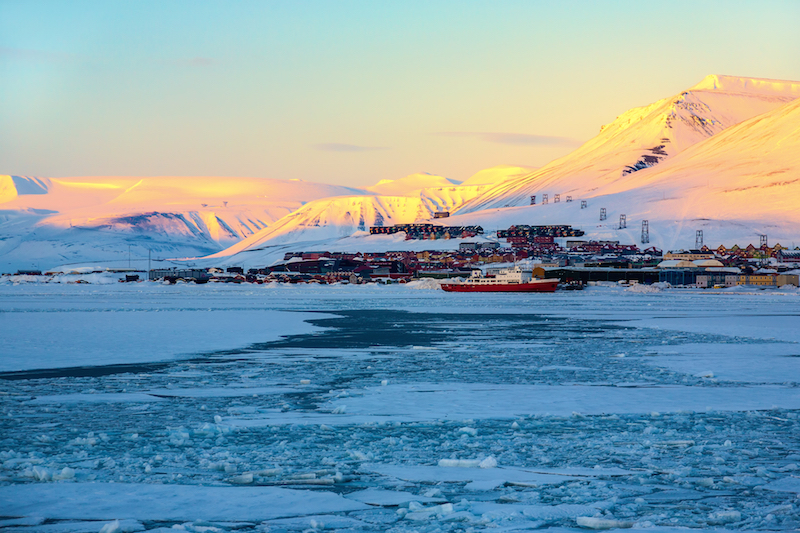 ARCTIC COUNCIL EFFORTS
ARCTIC COUNCIL EFFORTSA range of Arctic Council initiatives have produced reports, recommendations and implementation actions directed towards better understanding the threat and potential ways to prevent, control and manage the introduction of invasive alien species in the Arctic. In particular CAFF and PAME are working on follow-up actions as agreed to by the Arctic states in the Actions for Arctic Biodiversity 2013-2021; the Arctic Marine Strategic Plan (AMSP) 2015-2025; the Arctic Marine Shipping Assessment (AMSA 2009); and the Arctic Ocean Review (2013).
The Arctic Biodiversity Assessment (ABA 2013) provided for the first time, a baseline assessment of the status and trends in Arctic Biodiversity and the Arctic states approved 17 recommendations to follow up on the findings of the ABA. The Ministers of the Arctic Council tasked CAFF with developing an implementation plan for the ABA recommendations. This document titled Actions for Arctic Biodiversity 2013-2021 has been released and endorsed by the Arctic Council.
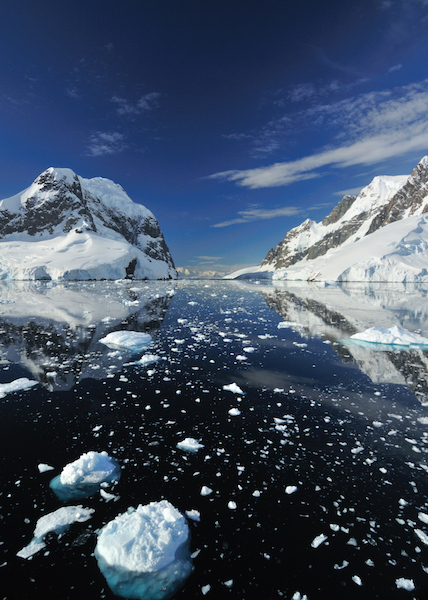 The project covers both Marine and Terrestrial ecosystems and regarding the Marine CAFF and PAME have agreed upon an approach to ensure effective use of resources; avoid duplication of efforts, and ensure activities compliment and contribute to each other as relevant.
The project covers both Marine and Terrestrial ecosystems and regarding the Marine CAFF and PAME have agreed upon an approach to ensure effective use of resources; avoid duplication of efforts, and ensure activities compliment and contribute to each other as relevant.Regarding the Marine ecosystem the AMSP identified the following actions:
7.2.5 Develop and encourage the Arctic states to implement common measures and support research into technology and techniques for early detection and reporting of marine invasive species in the Arctic marine environment.
The first workshop to initiate this process was held in Akureyri, Iceland on March 30th-April 1st and brought together a diverse group of experts with the goal of developing an action plan for the prevention and management of IAS across the Arctic. The Workshop Report provides a summary of the workshop activities and outcomes.
Click here to download the Workshop report
GOALS OF THE PROJECT
We will use the concept of risk assessment to accomplish the goals listed below. Specific goals identified in the strategy will lead to products that can inform priority setting by the Arctic Council, its Member States, observer countries and organizations, the Permanent Participants,industry
 and others to improve risk management of invasive species. We will focus especially onprevention of new introductions because prevention is likely to bring the largest long-term return on investment; other on-going Arctic Council efforts will inform early detection (e.g., the Circumpolar Biodiversity Monitoring Program); and resources constraints are unlikely to allow a rigorous approach to other aspects of management that require distinct approaches for different species (e.g., control).
and others to improve risk management of invasive species. We will focus especially onprevention of new introductions because prevention is likely to bring the largest long-term return on investment; other on-going Arctic Council efforts will inform early detection (e.g., the Circumpolar Biodiversity Monitoring Program); and resources constraints are unlikely to allow a rigorous approach to other aspects of management that require distinct approaches for different species (e.g., control).Questions to be addressed in the strategy/framework:
A) How and where are living organisms likely to be introduced to Arctic ecosystems?
B) Which species are both likely to be introduced and likely to be harmful?
C) Which high value locations (areas protected for biodiversity value, indigenous hunting and fishing areas, important caribou/reindeer habitat, etc.) are especially vulnerable to invasion?
D) How can the different layers of information gathered to answer the questions above be integrated to identify locations and practices that are most likely to prevent future harm from invasions? 
E) What management activities and polices have been adopted to improve management of invasions? Click here to download the project plan.
Click here to download the project plan.





